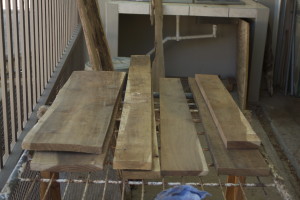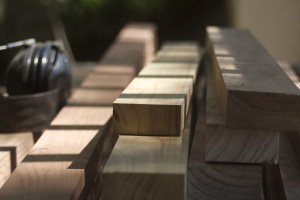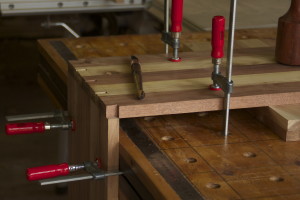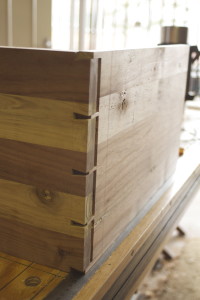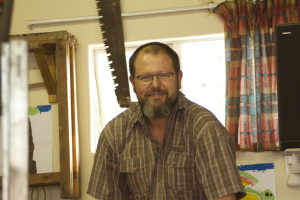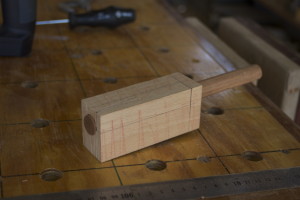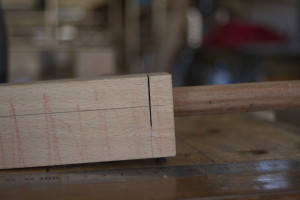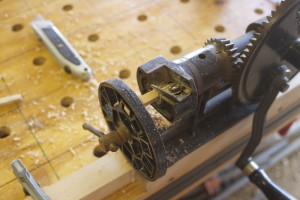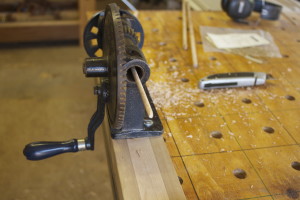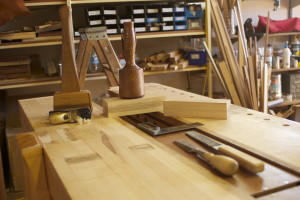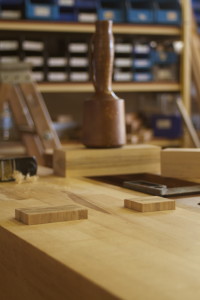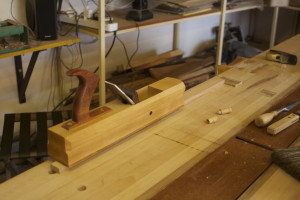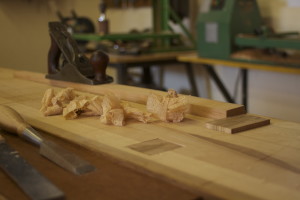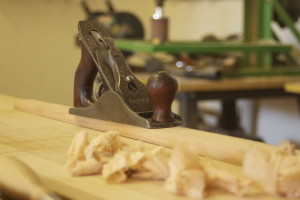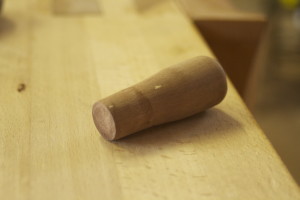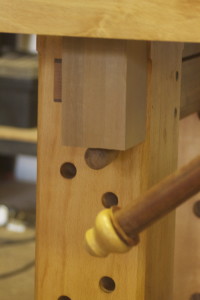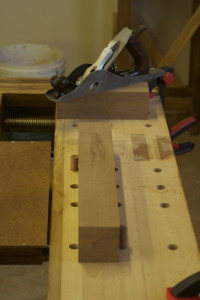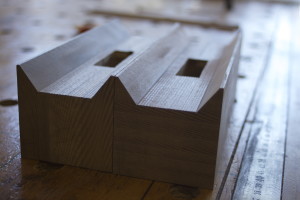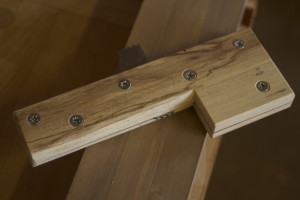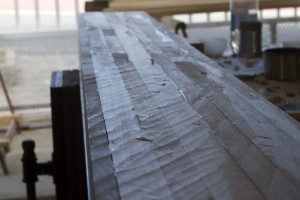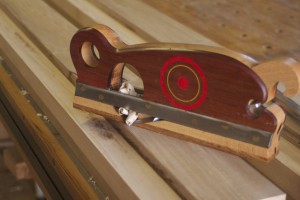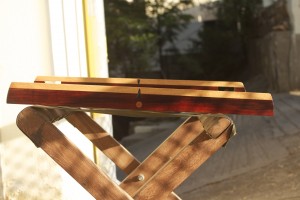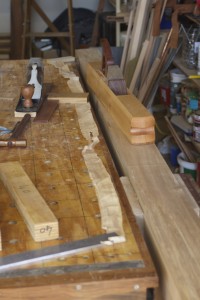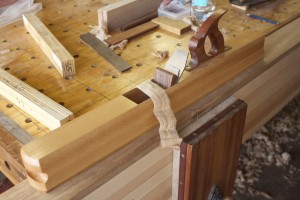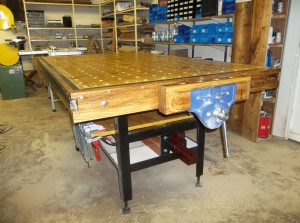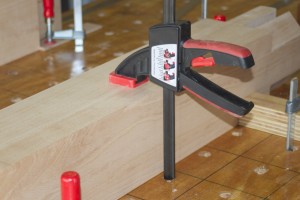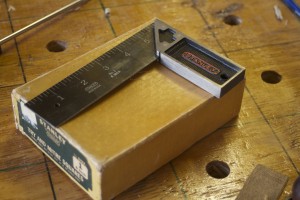19/1/2015
While my monster workbench is getting quite close to being finished, I want to start building two saw benches. I need to start preparing the stock as it inevitably takes a lot of time, seeing that I need to laminate bits of crappy wood to make up the boards I need. It pains me to see how those American woodworkers can rock up to a lumberyard and buy perfect boards (of almost any species) in any imaginable dimension, go home and start working on their project. I work for weeks to cobble together strips of wood to make up boards that will be appropriate for the task. I decided to use Tasmanian Blackwood in this particular case, as I have quite a bit of it and I do not like using it for anything else than shop structures.
I looked at heaps of different designs (in the past 6 months or so) to work out what would suite me best. The design I settled on is based on a saw bench in an article entitled “If the tool fits …” by Ron Herman, in the August 2011 issue of Popular Woodworking Magazine.
In the pictures below you can see the rough stock I picked. It is not the best stock at all, but I would rather use the good stuff for other purposes.
Here I tried to work out what the ideal height should be given my personal Vitruvianisms (I think this might be a new word). It seems that 18½” (47cm) fits my Vitruvian lower leg.
Arranging the strips for the first two glue-ups.
As per usual, I used my Festool Domino to ensure that the edges stay flush. The Domino is the only power tool I still enjoy using. It is fairly quiet and generally a joy to use.
9/2/2015
The second batch of stock that was processed.
This is my woodworking buddy. Her name is Pipsqueack.
From these pictures you can appreciate the wide range of different colours one can find in Tasmanian Blackwood. These strips were the first to be hand planed on my new bench. The two planes I used feature in the last picture.
Another round of glue-ups.
Removing the dried excess glue with my shop made flush plane.
16/2/2015
23/2/2015
Lamination done.
I started preparing the laminated stock this weekend. The first and most arduous task was to get rid of the slight twist in the boards. Once one face was flat I used the electrical planer to flatten the opposite face.
After flattening one edge, …
… my shop made panel gauge came in handy to mark out the opposite edge. While doing this, I realised that by flipping round the lids of my sliding tool trays it creates an ideal stop (in conjunction with my planing stop) to do this task. Just another nifty feature of my bench design.
Yep, I am a “tails first” type of guy … for now anyway. This is my first attempt at multiple dovetails, so my approach might change depending on how it pans out.
Cleaning out the waste.
Transferring the tails to mark out the pins. Here you can appreciate how my shop made assembly table assists with this delicate task.
A first careful fit.



